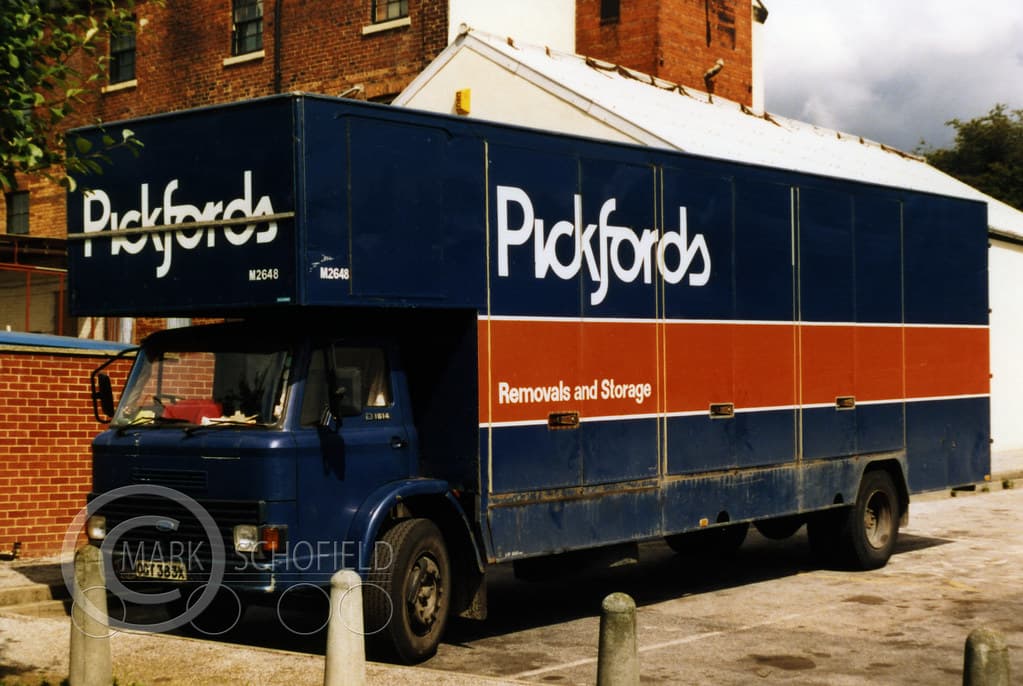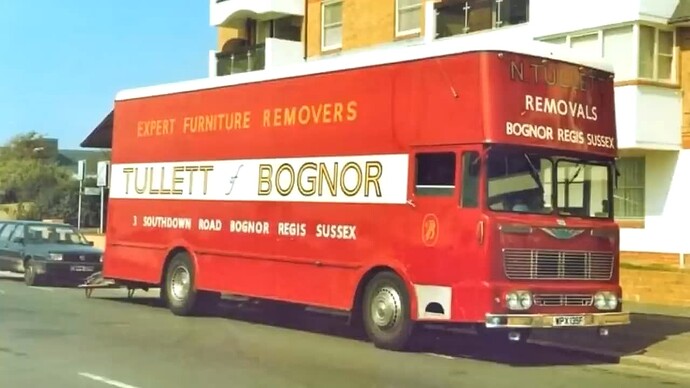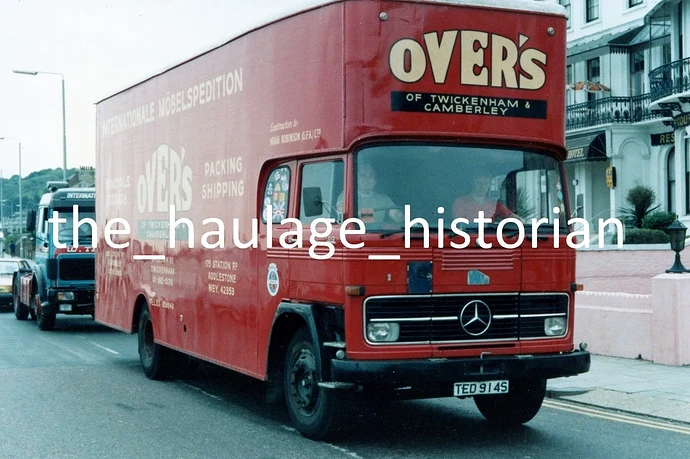These vehicles were allocated to the business removals division, perhaps to allow for more porters to travel to these jobs. Not every branch did office/commercial moves, only the large ones did. However, as most office/commercial moves seemed to take place over a weekend, they were often used for household stuff which was always a Mon-Fri operation (certainly in Scotland, don’t know about down south). This pic would have been taken after the privatisation in 1982 so this vehicle would have been approaching the end of it’s Pickford’s career ![]()
That’s a ‘Y’-reg Cargo behind, so it must be at least 8 years old. Looks like a pull-out ramp at the back instead of a drop-down tail, I always preferred the latter.
Which makes sense, though we did quite a few during the M-F workday week.
Shore Porters’ Soc. Vanplan based on a Leyland Leopard bus chassis (Courtesy Carl Williams on flickr)
The “N” suffix was used between Aug 1974 and Jul 1975 so this vehicle would have been due for disposal sometime between Aug 1982 and July 1983. The “Y” suffix began in Aug 1982. From memory the privatisation was around April 1982 and the slogan “we’ve moved into the driving seat” was applied shortly after that. Head office was quite firm on the 8 years policy (at that time, can’t speak for later as I moved back to BRS in 1983) to the extent that absolutely bizarre decisions were made. I had a Bedford that needed a replacement engine but it was 3 months short of the 8 year cut off. Instead of withdrawing it from service then they insisted that a “new” engine was fitted. All maintenance costs were the responsibility of the branch so I had to bear this bill in the full knowledge that I would only get a couple of months service from the vehicle. Bitter pill to swallow.
Strangely enough the monies from the sales of withdrawn vehicles was allocated to head office. I wonder of the fleet engineer was on a bonus for this ![]()
![]()
How would they tilt the cab on that?
It’s a mid-engined bus chassis so you just work on that basis. Leyland chassis, think the badge says Leopard but difficult to be sure. That or a Tiger as both were available at that time, most probably a Leopard as they were coming to the end of their production cycle then so would have been available at a lot less than the Tiger chassis.
Sorry, I was asking about the Berliet. Looking again,perhaps the “Luton” tilted with the cab?
I wondered about that too. If you go to the original scan on Alain’s flickr page and zoom right in, it may be that the front panel of the luton can be unbolted and folded up - that’s the only suggestion I’ve got.
The few lutons I’ve seen, the front panel hinges forward and the floor panel hinges up. Too bad if you have all the books and crockery in the peak. ![]()
You can clearly see the panel hinges on this Pickfords luton. This was a bit of an oddball fleet vehicle for Pickfords at the time. They came about when BRS Truck Rental cancelled an order for 150 x D1614’s which were due to have a 24” body fitted. To appease Ford - who not unnaturally were a bit peeved - Pickfords took them (at a heavy discount) and had the chassis lengthened to allow them to take 4 storage containers. From memory I’m sure that Pickfords containers were bigger than any of their competitors measuring 8’ x 7.5’.
I presume you said that tongue in cheek, as who in their right mind would load cartons of books and tea chests full of china on the luton ![]()
Hence the wink at the end. ![]()
It does, sure as the sunrise.
Almost (but not quite) an integral, perhaps?







